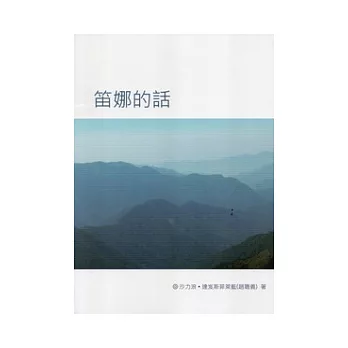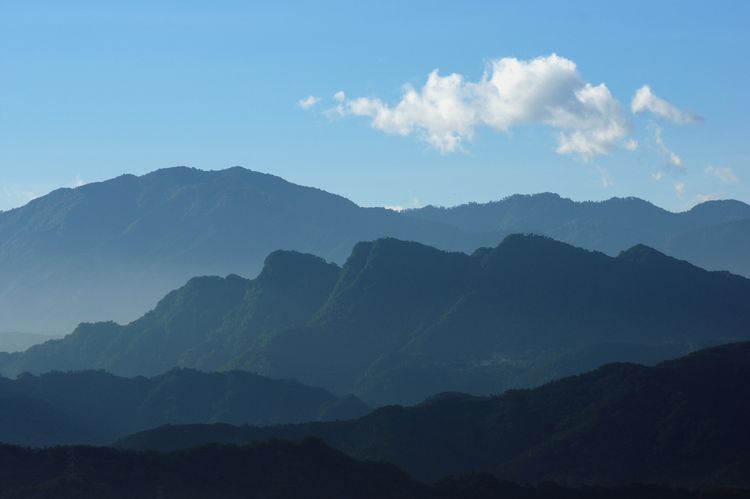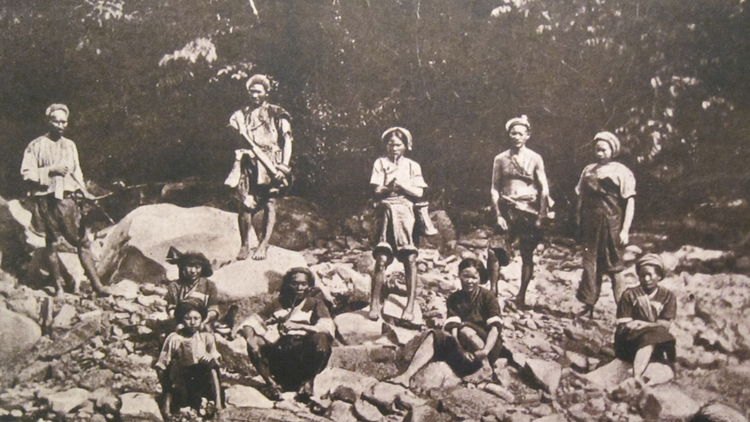藏在詩裡的山和舊部落:〈翻山越嶺至馬西桑〉The mountains and old communities hidden in the poem:〈Go Over Mountains Back To Masisan〉
如果問你,你祖先的部落在哪,你有辦法畫出來嗎?
來自花蓮卓溪鄉的布農族作家 Salizan Takisvilainan Ilistuan(砂力浪),在他的詩集《笛娜的話》中,留下了這麼一首代表布農族人記憶的詩:詩中不但將舊部落的記憶寫出,還把舊部落的位置畫出來……Can you tell me where your grandfathers came from?
Salizan Takisvilainan Ilistuan, a Bunun poet from Hualian, Taiwan, wrote a poem that recollects the common memories of Bunun to mountains, which also tells us the location of the old community where his grandfather came from……
〈翻山越嶺至馬西桑〉 祖先 踏進新天地 從 asang daingaz 翻過山谷 翻過溪谷 稜線 翻過平原 翻過山頂 到達 祖先的新居地 馬西桑 早晨,太陽最慢照射、陰影籠罩的部落 後輩們的祖居地 馬西桑 來到 經過細竹 經過旁邊 黑熊 經過蕨 經過水蒸氣 從 asang 踏過尋根之行 後輩們
這首詩,若你由前往後讀,
將順著祖先的路,追尋前人遷徙的歷史:
從「祖先,踏進新天地」開始,我們從布農族人的舊社 asang daingaz(大部社)啟程,從布農族的發源地濁水溪上游出發
翻過層層的山谷,橫過條條的涓涓溪流與高聳稜線
來到了平原,來到了秀姑巒溪上游的馬霍拉斯溪(Mahudas)
這裡有塊美麗的新天地,是陽光最後籠罩之處
於是,祖父和他的家人在此留下,從此這裡叫「馬西桑」(Masisan),是「太陽最慢照射的地方」……
這首詩,若你由後往前讀,
將循著祖先的路,開始後人的尋根之旅:
從「後輩們,踏過尋根之行」開始,我們離開了現居的新部落 asang(部落),試圖從遷徙的道路中,找尋祖先的記憶
來到叫 Walami(蕨)的地方,來到 Tahun(水蒸氣)為名之處
祖先曾看過很多兇猛的 Tutumaz(很多熊),曾看過很多美麗的 Isila(細竹)
最後回到太陽最慢照到的部落,是那祖父和他家人留下的「馬西桑」……
祖先記憶裡的馬西桑,你在哪
於是布農族的後人,把祖先的新天地,藏在詩裡
當我們把歪著頭看這整首詩,會發現
那山的樣子浮現
而馬西桑,就在布農族人記憶中的群山裡
好書推薦:
書名/《笛娜的話》
作者/Salizan Takisvilainan Ilistuan(砂力浪)

圖片來源:Wikipedia(CC Licensed)
〈翻山越嶺至馬西桑〉 祖先 踏進新天地 從 asang daingaz 翻過山谷 翻過溪谷 稜線 翻過平原 翻過山頂 到達 祖先的新居地 馬西桑 早晨,太陽最慢照射、陰影籠罩的部落 後輩們的祖居地 馬西桑 來到 經過細竹 經過旁邊 黑熊 經過蕨 經過水蒸氣 從 asang 踏過尋根之行 後輩們
〈Go Over Mountains Back To Masisan〉 The ancestors Entered the New World From Asang Daingaz They went over valleys Across streams and over crest lines Across plains and over mountain tops They came To Masisan, the New World A shadowy land that the sunlight reached the last To Masisan, the Ancestral Place They came Through the Slender Bamboos Through the Black Bears that walked by Through the Ferns and the Steam From Asang Started the path of seeking roots The descendants
If you read the poem from the beginning to the end,
you will follow the ancestral path to enter the history of Bunun’s migration:
From “The ancestors, Entered the New World” (祖先,踏進新天地), we start from the old community of Bunun, Asang Daingaz (the Big Community) around the upstream of Zhuoshui River, the longest river in Taiwan,
we hike over mountains and cross streams and crest lines.
Eventually we come to plains and reached Mahudas, a river at the source of Xiuguluan River in Eastern Taiwan.
Here there is a beautiful New World where the sunlight shines the last.
And thus stayed the grandfather and his family, and called the place Masisan, the Land of the Last Sunlight.
If you read the poem from the end to the beginning,
you will step on the path of seeking root to enter the history of Bunun’s migration:
From “The descendants, Started the path of seeking roots”, we leave our Asang (community) seeking for the ancestors’ memories along their old paths.
We come to the place called Walami (fern) and the place called Tahun (Steam).
We find our ancestors have seen many black bears in Tutumaz (Many Bears) and many beautiful slender bamboos in Isila (Slender Bamboos).
Eventaully we come to the New World where the sunlight reaches the last.
It is Masisan where our grandfather and his family left……
Where are you, Masisan in the old memory of my grandfather?
And thus the descendant of Bunun hid the New World and its location in the poem:
If you look at the poem from another direction, you will find the shape of mountains appear in front of you.
And Masisan is right hidden among the mountains of Bunun’s old and new memories.
Photo via Wikipedia(CC Licensed)





Leave a Reply